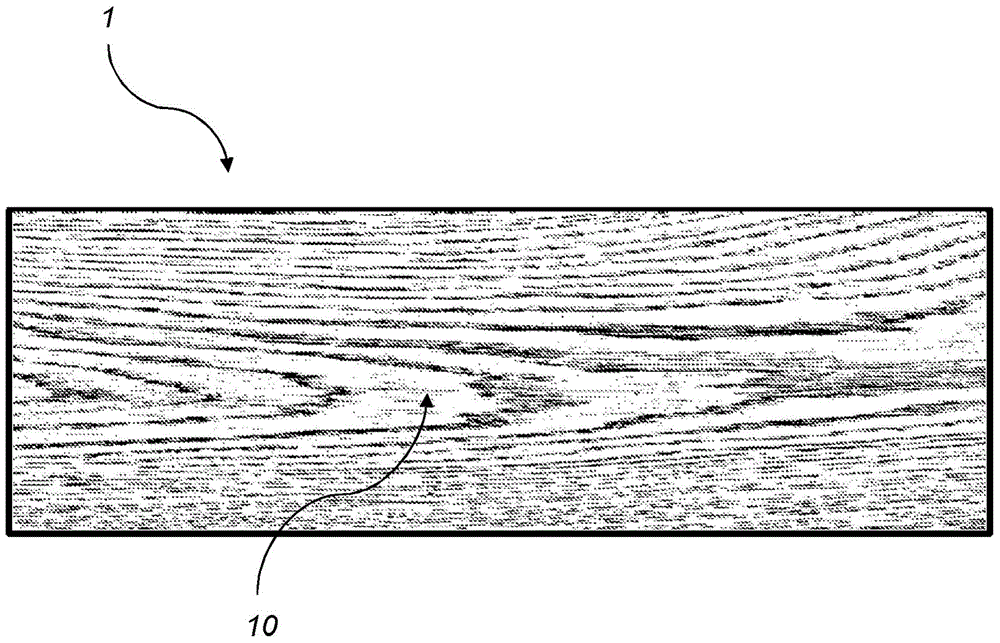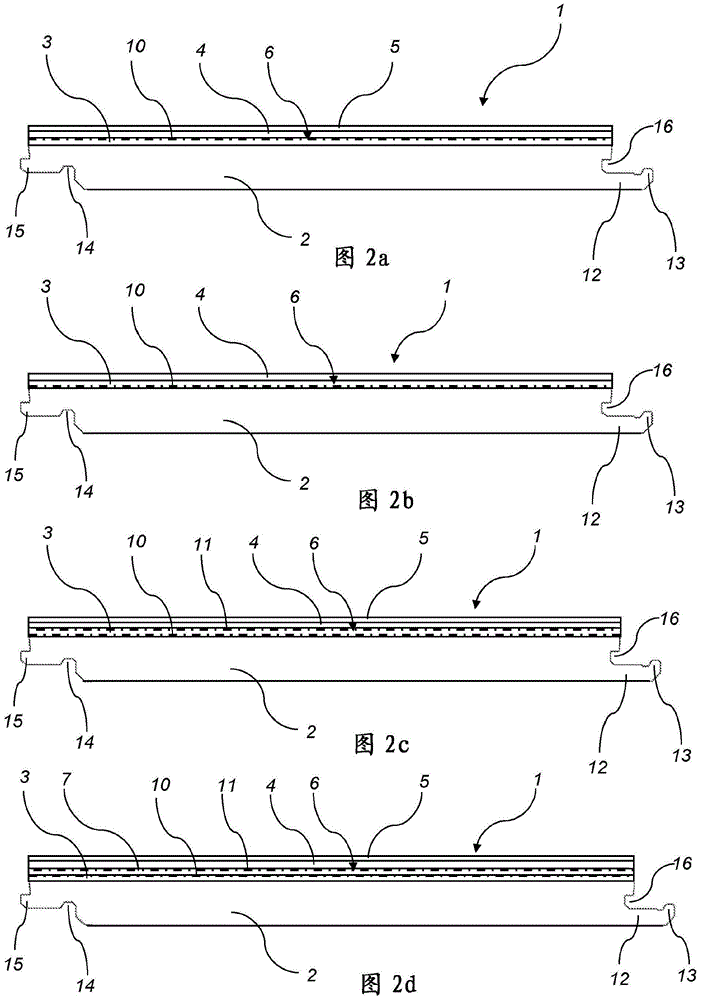Method of producing a building panel using digital printing
A technology of architectural paneling and digital printing, applied in the post-processing of printing, copying/marking methods, printing, etc., which can solve the problems of low quality, difficulty, etc., and achieve the effect of avoiding duplication
- Summary
- Abstract
- Description
- Claims
- Application Information
AI Technical Summary
Problems solved by technology
Method used
Image
Examples
example 1
[0155] White PVC foils for LVT were treated with a primer comprising 30 g / 100 ml of NaCl dissolved in deionized water, corresponding to 84% of the saturation point of NaCl in water. The foil is allowed to dry before further processing. The contact angle of the primer on the PVC foil was measured to be about 90°.
[0156] The primed foils were printed with water-based inks by means of a digital printing press. The print was dried at 60°C for 10 minutes. The printed foil was bonded to the PVC transparent protective foil for LVT in a hot / cold press process at 185° C. and a pressure of about 6 bar for 70 seconds, followed by cooling to 25° C. at a pressure of about 5 bar. The bond between the printed PVC foil and the protective foil is good.
[0157] Due to the difference in surface tension between the primer and the LVT foil, the primer cannot be applied uniformly on the surface of the foil. The printed image was not evenly fixed due to poor application of the primer.
example 2
[0159] White PVC foils for LVT were treated with a primer comprising 30 g / 100 ml of NaCl dissolved in deionized water, corresponding to 84% of the saturation point of NaCl in water. 2.0 wt% BYK345 was added to the primer solution as a wetting agent. It is measured that the contact angle of the primer on the PVC foil is less than 40°. The foil is allowed to dry before further processing.
[0160] The primed foils were printed with water-based inks by means of a digital printing press. The print was dried at 60°C for 10 minutes. The printed foil was bonded to the PVC transparent protective foil for LVT in a hot / cold press process at 185° C. and a pressure of about 6 bar for 70 seconds, followed by cooling to 25° C. at a pressure of about 5 bar. The bond between the printed PVC foil and the protective foil is good.
[0161] The primer is evenly applied on the surface of the LVT foil. The printed image was not uniformly fixed due to insufficient NaCl concentration in the prim...
example 3
[0163] White PVC foils for LVT were treated with a primer comprising 35 g / 100 ml of NaCl, corresponding to 97% of the saturation point of NaCl in water, dissolved in deionized water. 2.0 wt% BYK345 was added to the primer solution as a wetting agent. It is measured that the contact angle of the primer on the PVC foil is less than 40°. The foil is allowed to dry before further processing.
[0164] The primed foils were printed with water-based inks by means of a digital printing press. The print was dried at 60°C for 10 minutes. The printed foil was bonded to the PVC transparent protective foil for LVT in a hot / cold press process at 185° C. and a pressure of about 6 bar for 70 seconds, followed by cooling to 25° C. at a pressure of about 5 bar. The bond between the printed PVC foil and the protective foil is good.
PUM
| Property | Measurement | Unit |
|---|---|---|
| contact angle | aaaaa | aaaaa |
| viewing angle | aaaaa | aaaaa |
| particle diameter | aaaaa | aaaaa |
Abstract
Description
Claims
Application Information
 Login to View More
Login to View More - R&D
- Intellectual Property
- Life Sciences
- Materials
- Tech Scout
- Unparalleled Data Quality
- Higher Quality Content
- 60% Fewer Hallucinations
Browse by: Latest US Patents, China's latest patents, Technical Efficacy Thesaurus, Application Domain, Technology Topic, Popular Technical Reports.
© 2025 PatSnap. All rights reserved.Legal|Privacy policy|Modern Slavery Act Transparency Statement|Sitemap|About US| Contact US: help@patsnap.com



